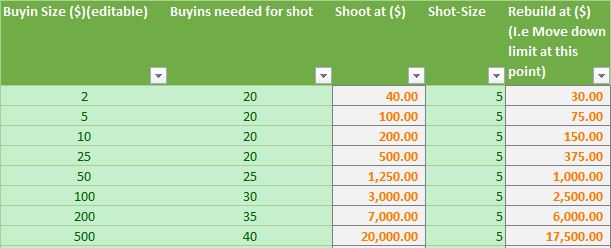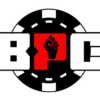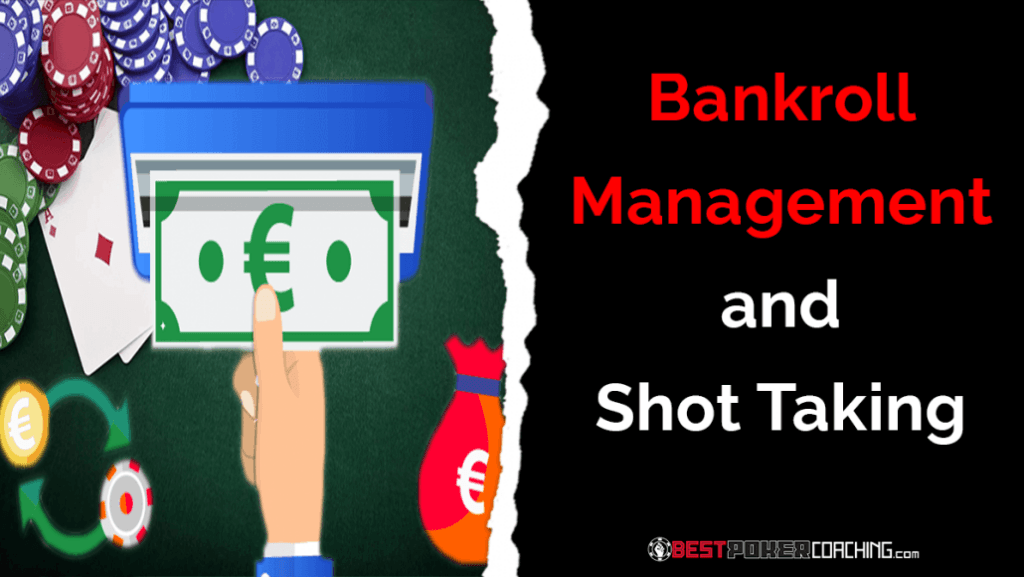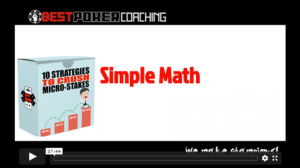In most regular jobs, workers follow a set of instructions passed down to them from management. They don’t concern themselves whether those instructions are in the best interest of the overall business. The worker still gets paid; it’s the business that will suffer if the management is making bad decisions.
The difference with poker players is that they are both workers and managers. They have to perform well on a day to day basis as well as be able to annotate the bigger picture with a good degree of accuracy. We are referring here to our off-table strategy. Not only do players need to make good decisions at the table in order to be successful, but they have to make excellent off-table decisions before they even sit down to grind.
There are some talented players out there who will never make it big at poker. Although they consistently win, the managerial style decisions are killing their potential. In this article we’ll discuss strategy regarding BRM (bankroll management) and taking shots.

BRM
A good BRM can make or break a player. Despite the huge significance of BRM, most online sources don’t discuss the topic with any real detail or accuracy. In some cases, the information is downright misleading.
As an example, many players understand that there is a relationship between our BRM and our ROR (risk of ruin). The “risk of ruin” formula takes into account a few variables such as our winrate, the number of buyins in our roll, and our standard deviation in order to calculate a percentage chance of going broke given a certain BRM strategy.
The first misleading and yet often-propagated idea is that our goal is to have the lowest risk-of-ruin % possible. This is not our goal at all. The goal of a good BRM strategy is to maximise our long-run expectation while retaining a tolerable risk-of-ruin value. Shooting for extremely low ROR values does not maximise our long-run expectation because it involves excessively tight bankroll management.
Let’s see a quick example –
Player 1 – Starts with $50. Plays nl2. Decides to shoot nl5 when he has 100 buyins ($500). He would need to make $450 at nl2, i.e $225 buyins.
Player 2 – Starts with $50. Plays nl2. Decides to take a 5 buyin shot at nl5 when he has 20 buyins. He continues aggressively taking small shots each time he is has 20 buyins for the next value. (Required buyins increases slightly as he approaches the higher limit games).
So where are we going with this? Take a look at the following BRM plan and imagine that player 2 is using it.

Let’s imagine that both player 1 and player 2 are big grinders and make 250 buyins over the course of 6months. Where have they reached?
Player 1 has reached nl5.
Player 2 has reached nl500.
We might even imagine that both players are of equivalent skill level. One of them has a shot at making it in poker, and the other doesn’t. One of them is a huge donk when it comes to off-table strategy. Player 2’s BRM simply has a significantly higher long-run expectation than player 1’s. A good BRM strategy allows us to do the following – spend as much time as possible playing the largest limits our bankroll management will allow. There is a huge opportunity cost associated with player 1’s strategy because he is spending long time playing a lower limit when he should be playing higher. In his mind it might be ‘playing it safe’, but he’s actually single-handedly destroying is chances of ever making it anywhere.
But what about player 2’s risk of ruin? Isn’t he living dangerously? Less so than we might think.
Inaccurate Risk of Ruin Calculations
As mentioned ROR calculations take into account the number of buyins we have in our roll. If we would like to see how this works specifically, a quick google search will show us how poker-related ROR formulae work.
Let’s imagine that we have $1250 in our roll and are thinking about taking a 5 buyin shot at nl50. To this day, the majority of players use the number ‘25’ when the formula asks for number of buyins in their bankroll. There is a big problem with this however, can you see what it is? It fails to take into account that players have the ability to move down limits if their shot fails. So, if we drop $250 we’d move down to nl25 with $1000 in our roll and have 40 buyins. If we ran badly at nl25 we’d move down to nl10 and so forth. In terms of our overall strategy we clearly have significantly more than 25 buyins in our roll. Naturally this leads to the following problems.
– Thinking our BRM strategy is significantly riskier than it actually is.
– Playing over-rolled to reduce risk, damaging our long-run EV in the process.
The truth is, that so long as we are willing to take short shots at the next limit – our risk of ruin does not increase dramatically.
Approach to Shot-Taking
Let’s take another example to show why short shots at the next limits are mathematically better.
Player 1: Saves up until he can take a 20 buyin shot at the next limit.
Player 2: Saves up just 5 buyins for the shot, intending to move back down and rebuild if the shot fails.
Imagine that as player 1 takes his shot, he first drops a couple of buyins and then immediately shoots up. His shot is a success. He’d saved up 20 buyins for the shot, but how many of those did he actually use? Just 2. The other 18 buyins he spent hours grinding out at the lower limit were completely irrelevant. If he’d been willing to shoot with just 5 buyins, he would have been able to move up weeks ago.
But what if the players were to drop 6 buyins? Player 2’s shot would have failed and player 1’s shot would have gone through. It doesn’t matter though. Player 2 can simply rebuild another 5 buyins and take a second shot. He’ll still find himself moving up a lot faster than player 1.
Actually one reason the majority of players look to take big 10-20 buyin shots is because they don’t like the idea of having to move down a limit. They realise they can increase the likelihood of any individual shot going through by saving up a larger number of buyins first. In terms of maths however, it’s far better to take a short shot and be comfortable with the idea of moving back down quickly. As a rough guide, 5 buyins should be the maximum shot size. We can even shoot with less than that, perhaps just 1 or 2 buyins.
Psychology of Shot Taking
Many player struggle to play their best when shooting a new limit. The two main reasons are as follows –
– They try to make sweeping adjustments to their strategy based on a small sample size of info at the new limit.
– They freeze and choke due to the increased size of the average wager.
To compensate for this, it’s a good idea to keep in mind the following.
– Our goal is not to crush everyone immediately, simply to get established at the new limit. It’s not reasonable to expect to make profit over the first 10k hands played in any new environment.
– We should think of our first sessions at the new limit as more of a “scouting” or “reconnaissance” mission. We can avoid taking coin-flips with marginal expectations and simply look to gather info on the types of opponents sitting at the tables.
– It’s ok to play slightly tighter than usual to compensate for our decreased tactical ability. (If we are nervous at the new limit, we can’t expect our cognitive functions to operate at 100% – we need to be realistic here. We might not have the presence of mind to navigate some of the closer spots that we might be dominating at the lower limits.)
– The only way we get comfortable with the increased wager size is by playing decent volume at the new limit. There is hence a side benefit to surviving as long as possible and picking up experience. This is another reason why we don’t want to force the action with high-variance low-expectation plays.
– We should not think of a failed shot as a “failure”. Good players expect to sometimes get knocked down several times before their shot goes through. They don’t let this damage their mindset or confidence. Being able to shoot aggressively and move down to rebuild when required cultivates discipline. This will be especially important when reaching the higher limit games.
It’s recommended that we take the time to write out a detailed BRM plan. The screenshot above can be used as a template. The goal should be to find a perfect balance between using aggressive BRM and not allowing our ROR % to become intolerable.




